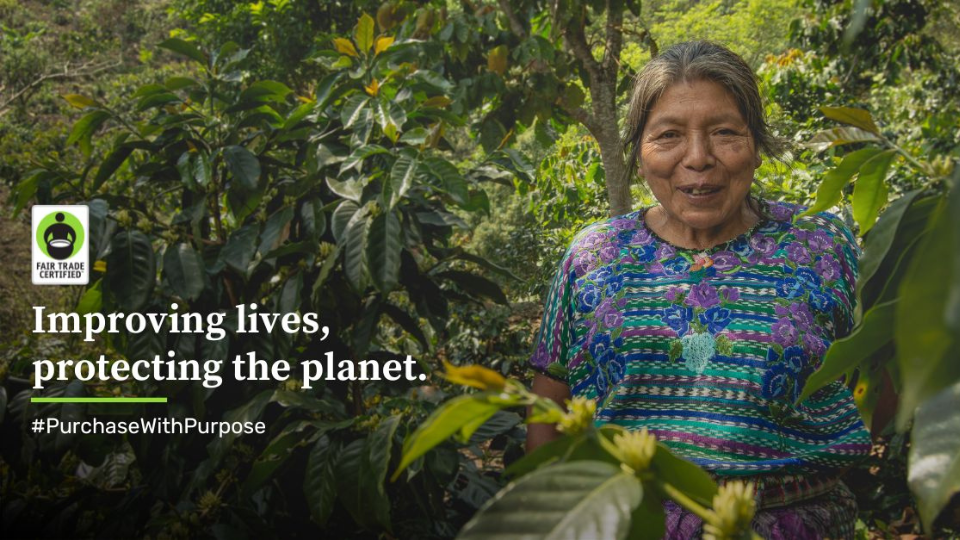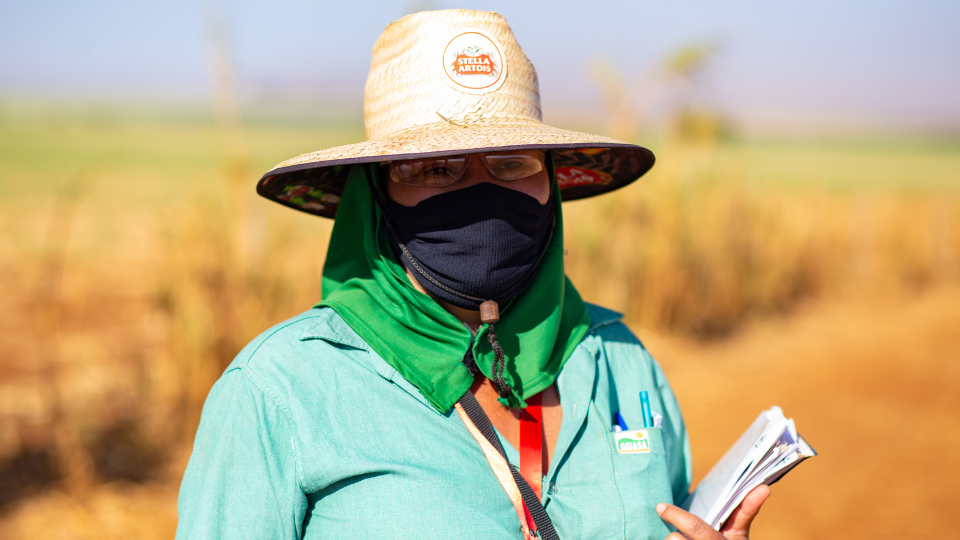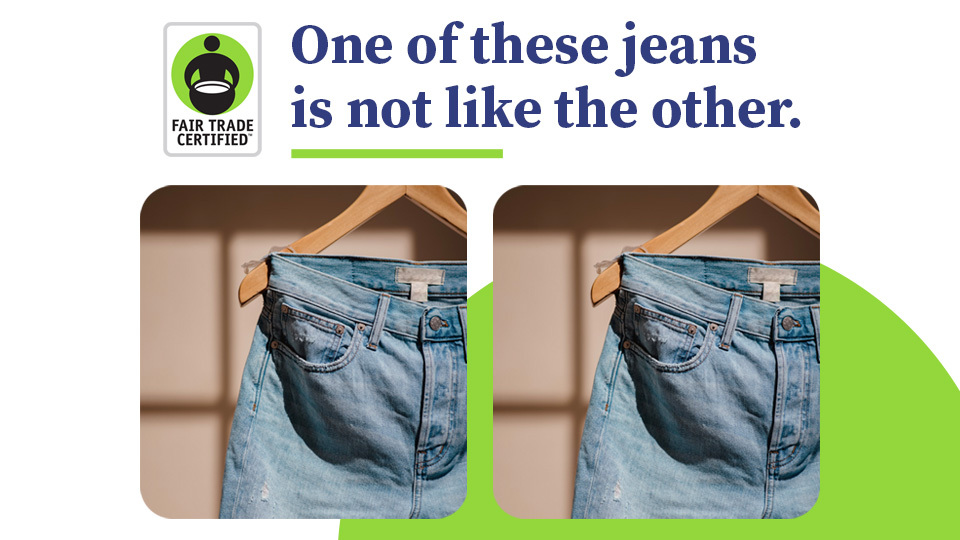The Fair Trade Movement and Our History
The term “fair trade” is not specific to any one organization or certifying body. Fair Trade is a global movement made up of a diverse network of producers, companies, shoppers, advocates, and organizations working together to build a more equitable model of trade.
After World War II, the Fair Trade movement began to take shape. One of the movement’s key pioneers was Edna Ruth Byler. An American businesswoman, Byler was moved by the women artisans she encountered along her travels and began selling their handmade textiles to her friends and neighbors to help them earn a living. Out of this grew Ten Thousand Villages and a global Fair Trade movement.
Fair Trade Certification began appearing with coffee in 1988, and expanded to include more products and countries. Fair Trade USA was founded in 1998 and for 13 years, we were a member of Fairtrade International—the international Fairtrade system made up of Fairtrade International and 19 national member organizations. In 2012, we separated from Fairtrade International with the objective of growing the impact of the fair trade movement to new products, geographies, and producers around the world.
Fairtrade International and Fair Trade USA share a common mission to empower farmers and workers around the world to enable sustainable development for themselves and their communities. Many of the producers that sell Fair Trade products to Fair Trade USA affiliated buyers in the US also sell products to Fairtrade International buyers.

Our Founder: Paul Rice
Paul Rice is the founder and visionary behind Fair Trade USA. Raised with a deep sense of compassion for the poor, Paul has spent 40 years fighting poverty and environmental destruction. The quintessential social entrepreneur, this passion led him to develop innovative models that harness the power of consumers and business to improve people’s lives and protect the planet. Today, Paul is regarded as a pioneer in the global Fair Trade and sustainability movements.
Paul launched Fair Trade USA (formerly known as TransFair USA) in late 1998 in a one-room warehouse in downtown Oakland, California. Under his leadership, Fair Trade USA became the leading certifier of Fair Trade products in the U.S. and one of the fastest growing segments of the food and beverage industries in North America. Today, the organization enjoys the support of over 1,700 major brands and retailers who sell everything from coffee and chocolate to apparel and seafood. On Paul’s watch, the organization and its partners generated over $1.2 billion in cumulative financial impact for over 1 million farmers, workers and their families in 70 countries worldwide.
Before founding Fair Trade USA, Paul worked with family farmers for 11 years in the remote highlands of Nicaragua, where he founded and led the country’s first Fair Trade organic coffee export cooperative, Prodecoop. This deep, firsthand experience with Fair Trade in the field was profound and transformative for him, ultimately inspiring him to return to the United States with the dream of mainstreaming the Fair Trade movement in this country. He is now a leading advocate of ethical sourcing as a core strategy for both poverty alleviation and sustainable business.
Paul has been named Ethical Corporation’s 2019 Business Leader of the Year and has been recognized four times as Social Capitalist of the Year by Fast Company magazine, which dubbed him a “rebel in the boardroom.” He is also a recipient of the prestigious Skoll Award for Social Entrepreneurship, the World Economic Forum’s Social Entrepreneur of the Year, and the Ashoka Fellowship. He has spoken at the World Economic Forum, Clinton Global Initiative, Skoll World Forum, Conscious Capitalism CEO Summit, TEDx, Consumer Goods Forum, and numerous universities and conferences around the world. Paul is regarded as one of today’s leading visionaries and practitioners for sustainable sourcing and conscious capitalism.
“I think of myself as a lifelong social justice warrior,” Paul said. “My grandfather was a farmworker, and I’ve always felt connection and care for farming folk and their daily struggles. My personal mission is to help empower hardworking farmers and workers to improve their lives while protecting the environment where they live. I’m inspired by the realization that we as consumers have the power to transform business into a force for good in the world.”
Fair Trade USA Through The Years
Read Recent Blogs



Join the Fair Trade Community
Join our dedicated community of conscious consumers, and stay informed on the latest news and updates, learn about your impact, upcoming events and more!


















